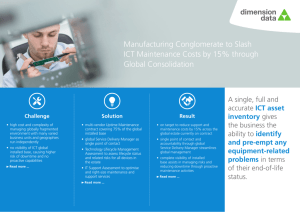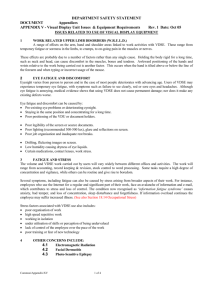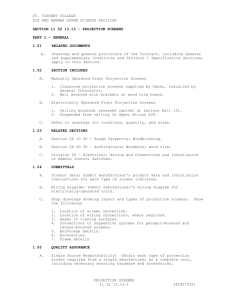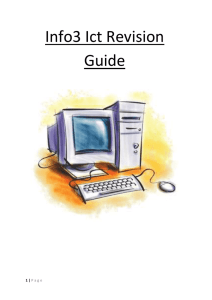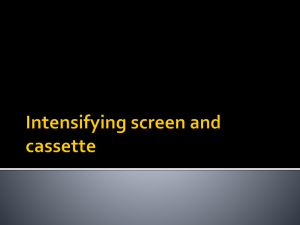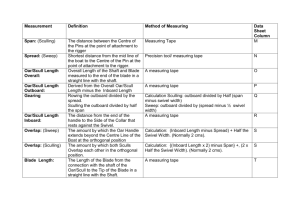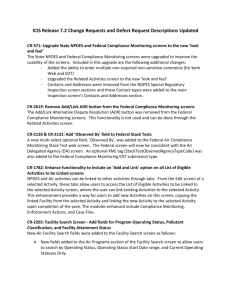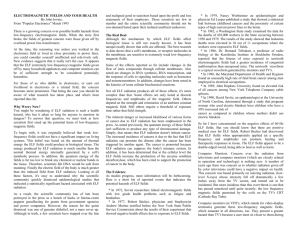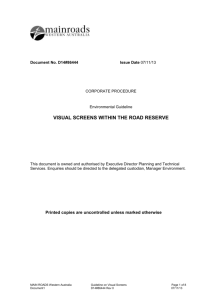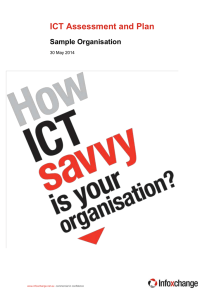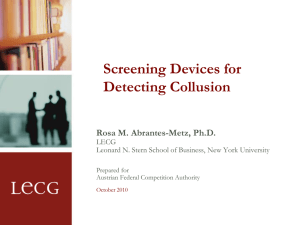Health and Safety - Computing and ICT in a Nutshell
advertisement
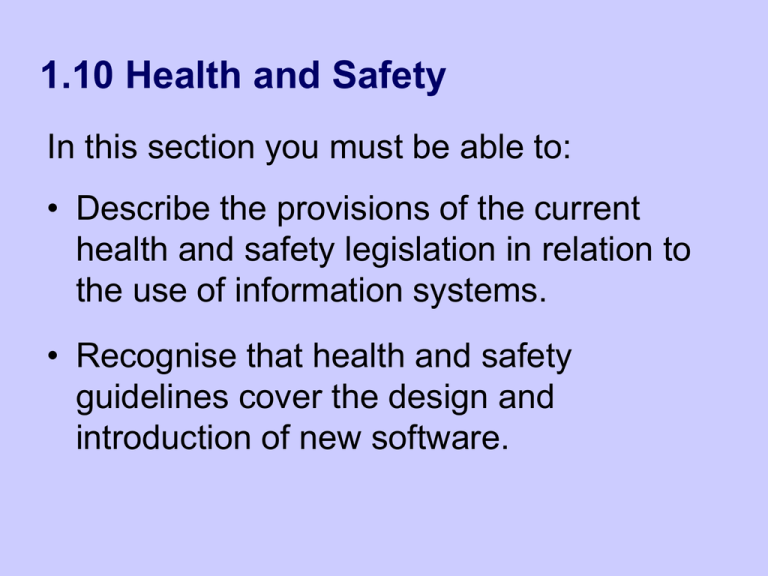
1.10 Health and Safety In this section you must be able to: • Describe the provisions of the current health and safety legislation in relation to the use of information systems. • Recognise that health and safety guidelines cover the design and introduction of new software. Health and Safety Issues ICT use can lead to the following health concerns: • RSI – Repetitive Strain Injury • The effect of radiation from VDUs • The effect of computer use on eye-sight • Stress These can be improved by: • Having an ergonomically designed workplace • Following health and safety guidelines • Using carefully designed software systems Repetitive Strain Injury • A variety of disorders affecting the neck, shoulders and upper limbs • Caused by repeated small movements – e.g. typing or moving the mouse – data-entry are clerks badly affected • Results in numbness, tingling, aching or stiffness • RSI was identified as early as the 18th century but diagnosis has proved contentious in recent times • There is no medical cure other than to: – Stop the repeated motion, e.g. with a change of equipment – Use proper supports – e.g. wrist rests – Stretch regularly and include other exercises Extra Low Frequency Radiation • We are exposed to ELF radiation from: – Mains electricity – Computer monitors – Natural sources, such as sunshine! • Research has shown that there may be a link between ELF radiation and health problems • A causal link between VDU use and miscarriage has not been established, although there is a positive correlation – this could be caused by other factors such as stress and poor ergonomics • Radio equipment (such as mobile phones) has also been in the spotlight Eyestrain • Computer users spend a long time focussing on screens that are relatively close • Other aggravating factors include: – Glare and other improper lighting – Poor work practices – insufficient rest, etc. – Poorly designed equipment – Improperly corrected vision (i.e. not wearing your glasses) • Screens are best viewed in dim lights, but this can make paper documents difficult to see • There is no evidence that there is permanent damage to the eyes Sources of Stress In work environments, stress can be caused by: • Demands – such as workload, work patterns and the work environment. • Control – such as how much say the person has in the way they do their work. • Support – such as the encouragement, sponsorship and resources provided by the organisation, line management and colleagues. • Relationships – such as promoting positive working to avoid conflict and dealing with unacceptable behaviour. • Role – such as whether people understand their role within the organisation and whether the organisation ensures that they do not have conflicting roles. • Change – such as how organisational change (large or small) is managed and communicated in the organisation. ICT-related Sources of Stress More specifically, ICT can in induce stress: • Slow machinery – i.e. having to wait for things to log in/out, and data to be processed • Inappropriate or faulty systems • Lack of skills (or confidence – “will it break if I press the wrong key?”, or “I’m too old to use computers”) • Information overload • Work rate – performance can be monitored by software that counts key clicks • Monitoring – e.g. e-mails, web-pages, audit logs • The ability to work at home – with laptops, mobile, pagers, etc. – so it feels like you’re always at work • Speed of development – the pace at which things can change in the ICT industry Information Overload • Managers are bombarded with more information than they can handle • This can produce “information anxiety” • For example, even searching for “information overload” in Google finds 1,850,000 hits in 0.3s! • If people are away for a few days they can have 100s of e-mails waiting for them when they get back • In a survey of ICT department heads, more than 75% reported that pressure at work caused problems in their personal lives from loss of appetite and sleep to alcohol abuse Health and Safety Regulations • The Health and Safety (Display Screen Equipment) Regulations 1992 protect the health of employees • Employers must – Analyse workstations for safety – Provide training on the use of workstation components – Ensure that employees have regular breaks or changes of activity – Provide regular eye tests for workstation users and pay for glasses where necessary Health and Safety Regulations • Employees must – Use workstations and equipment correctly, in accordance with the training provided – Bring problems to the attention of their employer immediately and co-operate to correct them • Manufacturers are also required to ensure that their products comply with the directive, e.g. – Screens must tilt and swivel – Keyboards must be separate and movable • Notebook computers are not suitable for entering large amounts of data Ergonomics • Refers to the design and functionality of the environment. Employers must consider: – Lighting – offices should be well lit with adjustable blinds to control sunlight & glare – Furniture – chairs should be adjustable – Work space – including heating & ventilation – Noise – must be kept to a minimum – Hardware – screens must tilt and swivel, etc. – Software – must make tasks easier and be adaptable to the users’ needs Software Quality Bad software can be extremely stressful to use, e.g.: • Badly-chosen colour schemes • Incomprehensible error messages • Non-standard keys or interface • Badly structured menus • Repeatedly failure of new software • Lack of functionality – not doing what it should • Unnecessary features – e.g. “Tip of the Day” or the Office Assistant tell you that you appear to be writing a letter • Slow processing Can all lead to frustration. (see also 2.10 Human/Computer Interface)









